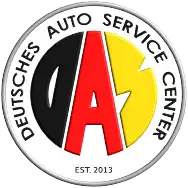Shaking or vibrations in a Ford F150 may well be inconvenient and worrisome. Comprehending the potential roots of this issue is basic for effective troubleshooting and ensuring the vehicle functions properly. For your Ford repair in Dubai, the following are ordinary causes of a Ford F150 trembling. Let’s get started!
Issues because the Ford F150 Shakes
Encountering your car trembling whereas driving is one of the most awkward sensations for a driver. Your vehicle seems to vibrate for different reasons, and the seriousness of the possible issues can vary substantially. Here are a few of the reasons why the Ford F150 may shake:
Wheel and Tire Problems
- Unbalanced Tires: Unbalanced tires are one of the most common reasons for shaking. Especially at higher speeds, improper tire balance can result in vibrations felt through the controlling wheel or the entire car. This issue can be avoided by routinely rotating and adjusting your tires.
- Misaligned Wheels: Issues with wheel alignment can too cause vibration. Hitting checks or potholes, as well as normal wear and tear, can cause misalignment. Uneven tire wear and vibrations might result from misaligned wheels.
- Tire Wear: Uneven or worn-out tires may cause trembling. Check your tires for wear pointers like feathering, measuring, or bare areas. These issues can be settled by changing out worn tires and making sure they are accurately aligned.
Controlling and Suspension Parts
- Worn Suspension Parts: The suspension system comprises essential parts such as control arms, struts, and shock absorbers. In case these components are worn out or broken, the car may tremble. Expanded body roll, shaky dealing with, and vibrations are common symptoms.
- Issues with the Steering Linkage: Ball joints and tie bars malfunctioning can moreover result in trembling. Unsteady driving and vibrations can be caused by worn-out or loose steering parts, especially when turning or traveling over bumps.
- Issues with the Brake System: Warped brake rotors are a significant vibration source, particularly when braking. Excessive warmth might come from difficult braking or expanded use, which causes warping. Vibrations through the brake pedal indicate that the rotors may got to be replaced or resurfaced. Brake vibrations may moreover be attributed to worn or uneven brake pads. This issue can be avoided by routinely supplanting the cushions and guaranteeing they are worn evenly.
Motor and Drivetrain Problems
- Issues with the driveshaft: Control is transferred from the motor to the wheels through the driveshaft. In case it is bent or unequal, the driveshaft may vibrate significantly. Issues with the center bolster bearing or the universal joints may also cause shaking.
- Engine Misfire: An engine misfire happens when the fuel-air blend isn’t lighted correctly in one or more cylinders. Vibrations might result from an engine running unevenly due to fizzles. Ineffective fuel injectors, start coils, and start plugs are common offenders.
- Transmission Issues: Vibrations may be caused by transmission problems, such as torque converter issues or worn-out transmission mounts. Sheer motions and shaking may result from an issue with the transmission.
Issues with the Exhaust System
- Exhaust Leaks: Exhaust system leaks, especially in the vicinity of the engine, may cause vibrations. Shaking may result from an exhaust leak interfering with the engine’s smooth running. Exhaust pipes vibrating can also be caused by loose or broken hangers or mounts for the exhaust system.
Environmental Elements
- Road Conditions: Uneven or rough surfaces might lead to transient vibrations. Although the car is not the problem, extended use on bumpy roads can accelerate the deterioration of suspension parts and cause persistent vibration problems.
- Distribution of Loads: If a vehicle is carrying an excessive or uneven weight, it may shake. The load must be equally distributed and under the weight limit for the car to operate smoothly.
Preventive Actions and Remedies
- Frequent Maintenance: Avoiding trembling problems requires regular maintenance. This covers regular wheel alignment, brake inspections, suspension checks, and tyre balancing and rotation. Following maintenance plans can help spot possible issues before they cause noticeable vibrations.
- Professional Inspection: If the shaking continues after regular maintenance, it’s essential to have the car examined by an experienced mechanic. They can conduct a comprehensive diagnostic to identify the precise reason and suggest suitable fixes.
In summary
A Ford F150’s vibrations or shaking can be caused by several things, from minor issues like misaligned tyres to major ones like drivetrain or suspension failures. By being aware of these possible causes and performing routine maintenance, you can guarantee a more dependable and comfortable driving experience. If the issue persists, professional assistance from car repair specialist must be sought to properly diagnose and resolve it.






